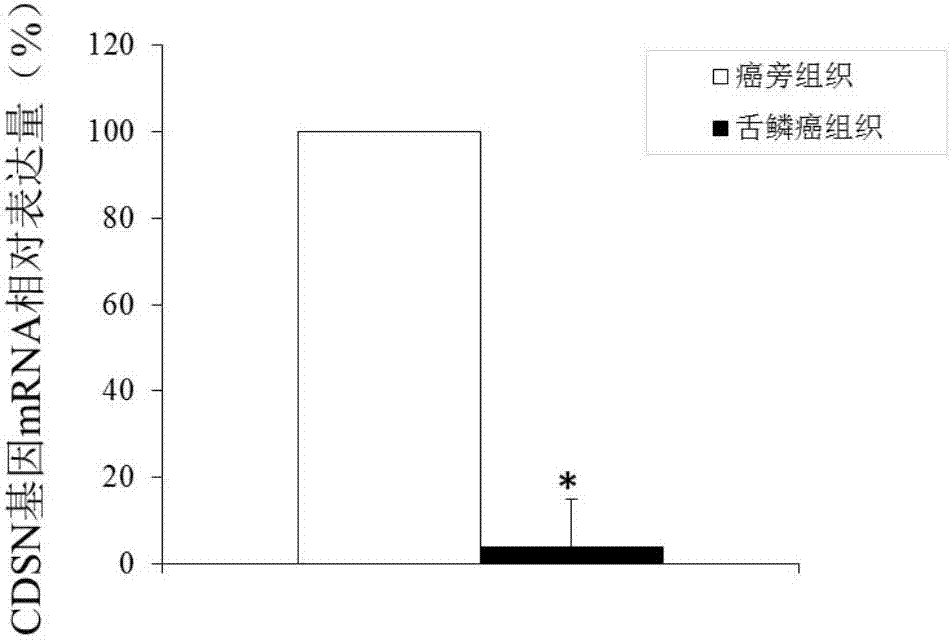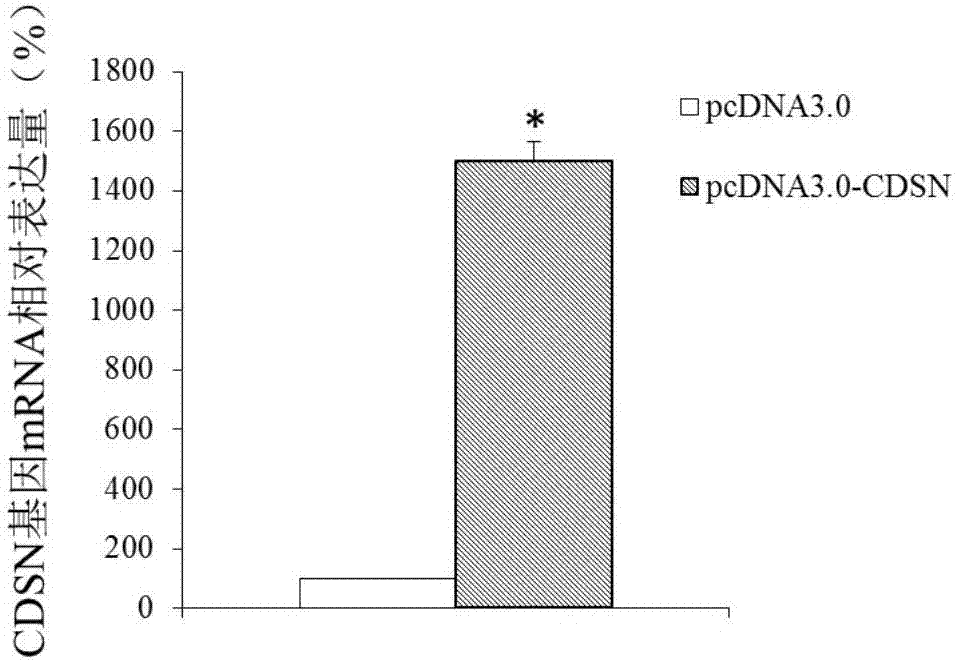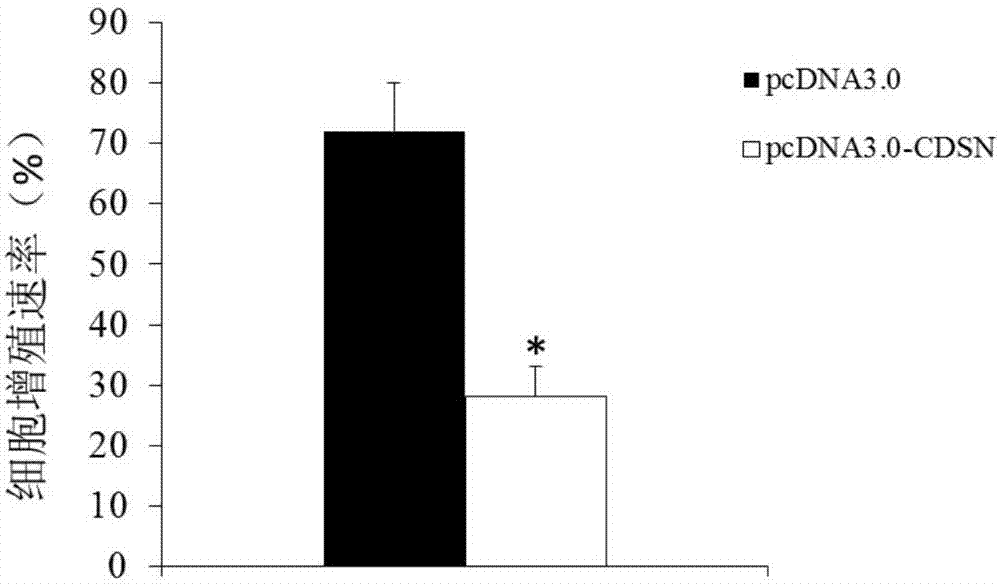CDSN as diagnosis and treatment target of tongue squamous carcinoma
A tongue squamous cell carcinoma and product technology, applied in the field of tumor diagnosis and prognosis prediction, can solve the problems of large lesions, affecting the quality of life of patients, and wide surgical resection.
- Summary
- Abstract
- Description
- Claims
- Application Information
AI Technical Summary
Problems solved by technology
Method used
Image
Examples
Embodiment 1
[0062] Example 1 Screening of differentially expressed genes
[0063] 1. Materials:
[0064] Tongue squamous cell carcinoma and paracancerous tissue specimens were taken from patients with tongue squamous cell carcinoma undergoing radical resection. There were 5 patients. All tissue samples were confirmed by histopathology, and a consent form for voluntary donation for use in this experiment was signed. The cancerous tissue was the central area of the tumor when the material was collected; the corresponding paracancerous tissue was the tissue 1-2cm away from the edge of the cancerous tissue. All specimens were placed in 1.5ml EP tubes and stored in liquid nitrogen tanks. All specimens were collected from patients who had not undergone any form of anti-tumor treatment and had no history of tumors in other locations.
[0065] 2. Obtaining tissue RNA
[0066] Total RNA was extracted from tissue samples, and the concentration and purity of the extracted RNA were detected by N...
Embodiment 2
[0092] Example 2 Large sample verification screened out differentially expressed genes
[0093] Based on the results of the previous high-throughput transcriptome deep sequencing, and according to the size of the P value, we selected the CDSN gene for verification.
[0094] 1. Sample collection
[0095] According to the method of Example 1, 45 tongue squamous cell carcinoma tissues and 45 corresponding paracancerous tissues were collected.
[0096] 2. Validation at the mRNA level
[0097] 2.1 Extract tissue RNA
[0098] Step is with embodiment 1.
[0099] 2.2 Reverse transcription
[0100] Reverse transcription using Primescript 1 st strand cDNAsynthesis kit kit, the operation steps are as follows:
[0101] (1) Add the following reaction liquid in the microcentrifuge tube, as shown in Table 1:
[0102] Table 1 Reaction liquid
[0103]
[0104]
[0105] (2) Incubate at 70°C for 5 minutes, then rapidly cool to 4°C;
[0106] Add the following reagents into a micro...
Embodiment 3
[0127] Example 3 CDSN gene overexpression
[0128] 1. CDSN gene recombinant plasmid construction
[0129] (1) amplifying the coding sequence of the CDSN gene;
[0130] (2) Design amplification primers;
[0131] (3) Link the amplified CDSN gene into the expression vector pcDNA3.0.
[0132] 2. Culture and transfection of tongue squamous cell carcinoma cells
[0133] 2.1 Cell culture
[0134] Tongue squamous carcinoma cell line Tca8113 was inoculated in RPMI-1640 medium containing 10% calf serum, 100 μ / ml penicillin, and 100 mg / ml streptomycin.
[0135] 2.2 Cell transfection
[0136] (1) The day before transfection, 1*10 5 Tumor cells were suspended in 500 μl of antibiotic-free medium and seeded into 24-well culture plates.
[0137] (2) Transfect when the cell density reaches 85%. Dilute 1 μg of recombinant plasmid DNA in serum-free medium and mix gently; take 4 μl Lipofectamine2000 and dilute it in serum-free medium, mix well, and mix the two parts Mix and stand for 20 m...
PUM
 Login to View More
Login to View More Abstract
Description
Claims
Application Information
 Login to View More
Login to View More - R&D
- Intellectual Property
- Life Sciences
- Materials
- Tech Scout
- Unparalleled Data Quality
- Higher Quality Content
- 60% Fewer Hallucinations
Browse by: Latest US Patents, China's latest patents, Technical Efficacy Thesaurus, Application Domain, Technology Topic, Popular Technical Reports.
© 2025 PatSnap. All rights reserved.Legal|Privacy policy|Modern Slavery Act Transparency Statement|Sitemap|About US| Contact US: help@patsnap.com



